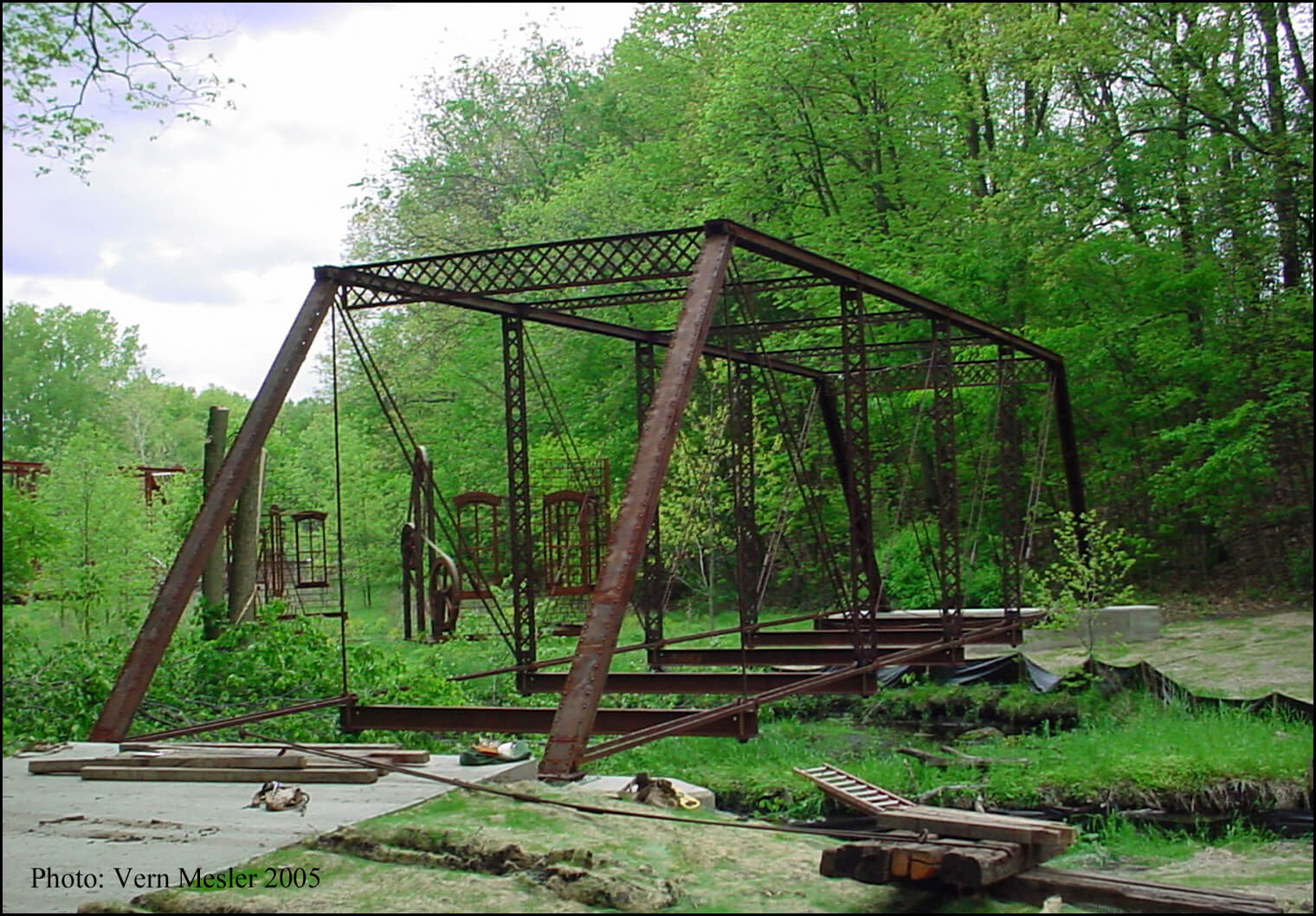Small stones crack under the iron straps on the heavy freight wagon wheels, and a light spring breeze creates small clouds of dust as the wagon’s fifth wheel turns onto Bauer Road. Straining against their harnesses, the team of horses finishes the turn. Behind the teamster, strapped to the heavy freight wagon, are newly fabricated wrought iron bridge parts from the Penn Bridge Company of Beaver Falls, Pennsylvania. The team of horses pulls the wagon straight onto Bauer Road and moves slowly toward the recently built stone abutments along the Looking Glass River in Michigan. In a nearby field a farmer pauses for a moment from behind his horse drawn plow to watch the slow-moving wagon loaded with black painted wrought iron as it makes its way toward the abutments. He had read in the Grand Ledge Independent that the old wooden bridge would be replaced with a new iron bridge, and he looks forward to the day when the new bridge is erected and he can take advantage of the heavier loads the iron bridge can accommodate.
Climbing down from his seat, the teamster unfastens the harnesses from his horses to let them graze before going back to pick up another load of wrought iron bridge parts from the local train depot. A gin-pole is positioned over the wagon, and local craftsmen with heavy hemp rope straps begin to unload the bridge members. An aroma of oily hemp permeates the air and blends with the smells of the trees and river. The rope tightens in the double sheave wooden block, and the wrought iron bridge members are lifted from the wagon. That is how I imagine the scene. As I worked on the restoration of the Bauer Road Bridge, I visualized how the bridge parts would have been transported to the site and how the bridge would have been erected over the river, not by the industrial machinery that I’ve worked with but with the labor-intensive methods that would have been familiar to my ancestors.
Erected over the Looking Glass River in the 1880s, the Bauer Road Bridge served the local Michigan farm community for years until it was determined unfit for late twentieth century vehicle traffic. Mounds of dirt were piled at each end to prevent any further use of the bridge. Its identification plaque was removed by a local resident to put in their recreation room, and the bridge sat nameless for years. There are no ornamental iron details that decorate its main members, but within the plain simple lines, as with all historic metal truss bridges, lies a graceful efficiency designed to carry rural traffic. Within its eye bars, rivets, chord pins, and wrought iron is the unwritten record of a craftsman. During many historic bridge restorations, original bridge members are replaced with “new steel,” destroying the original and its irreplaceable manufacturing and craftsman record. Restored and erected in 2005, the Bauer Road Bridge now spans the Dickinson creek in Michigan’s Calhoun County Historic Bridge Park.
Vern Mesler 2020




